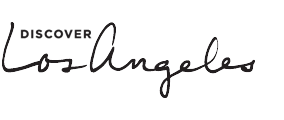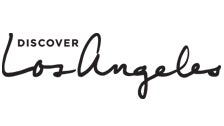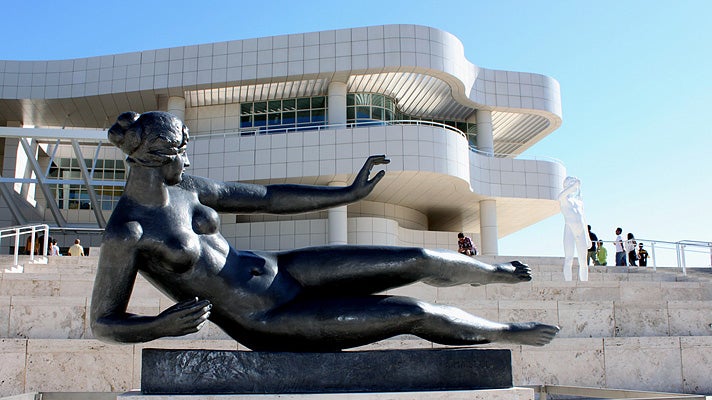Morning
Begin at The Getty Center, which can easily be a full-day excursion with its vast art collection, gardens and outdoor sculptures. A must-see here is van Gogh’s famous Irises, located in the West Pavilion at the far right-hand corner of the grounds. The Pavilion hosts traveling and special exhibits on the first and basement floors, with the permanent collection of Impressionists on the second floor.
The Getty Center breaks the mold of traditional art viewing with outdoor tours of the gardens and the museum’s architecture. The Museum Store sells a wide array of art posters and books for your personal collection — but browsing here can be just as rewarding. Grab lunch at one of the two cafes or The Restaurant (reservations recommended).
A short, 10-minute bus ride south will lead you to UCLA’s Franklin D. Murphy Sculpture Garden. Get off at the Sunset/Hilgard stop and walk onto the UCLA Campus via Charles E. Young Drive East, which parallels Hilgard Avenue, going southbound. Works include Auguste Rodin's The Walking Man and Henri Matisse's Bas Relief I-IV.
The sculpture garden is a comfortable place for students and teachers to enjoy the weather and relax between classes. Sculptures can be found throughout the garden, but are sometimes only visible when walking by at certain angles. At the northwest corner of the park, in front of the Eli and Edythe Broad Art Center, is Richard Serra’s massive steel environmental sculpture, T.E.U.C.L.A., which you can walk around and within. Some other famous sculptures at the garden are by Alexander Calder, Joan Miro, Henry Moore and Jacques Lipchitz.
While you're on UCLA's campus, you'll also want to check out the Fowler Museum. Its exhibitions, which are free of charge, emphasize non-Western cultures with art pieces, artifacts and an array of audiovisual presentations. Collectively, the museum’s exhibitions serve up a dose of academia for visitors who truly want to experience the campus.
Afternoon
From the same bus stop, another short 10-minute-or-less southbound ride will take you to the corner of Wilshire and Westwood Boulevards and the Hammer Museum. Its permanent collection, located on the east side of the building on the second floor, includes paintings by such masters as Rembrandt, Cezanne, Pissaro, Monet and van Gogh, as well as the famous portrait by John Singer Sargent, Dr. Pozzi at Home.
In addition to classic works of art, the Hammer has an impressive contemporary collection and often has the hippest traveling and special exhibitions in town. Occasionally, late-night parties are open to the public and recommended by locals.
Nearby, the Los Angeles County Museum of Art (LACMA), with the largest art collection in the West, has a cafe (with a kids’ menu) and a wide range of exhibits. Check out the contemporary collection, where the sculpture is much more challenging than a Rodin — although they have plenty of those, too. You might decide to make this the last stop of the day, since the museum is open late on Fridays and weekends, and the onsite Ray's and Stark Bar serves great food and stellar specialty cocktails.
You definitely won't want to miss the Broad Contemporary Art Museum (BCAM) and the Resnick Pavilion, the latest developments in the momentum of art and architecture that has consumed L.A. over the past three decades. Both BCAM and the Resnick Pavilion boast architecture by Pritzker Prize-winning architect Renzo Piano, and bring visiting exhibitions and contemporary art into the fold at the encyclopedic LACMA in a whole new way.




